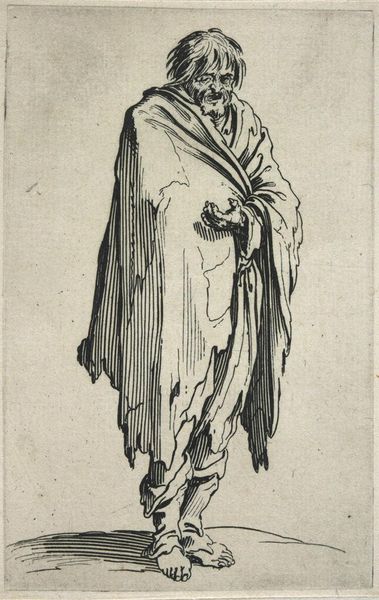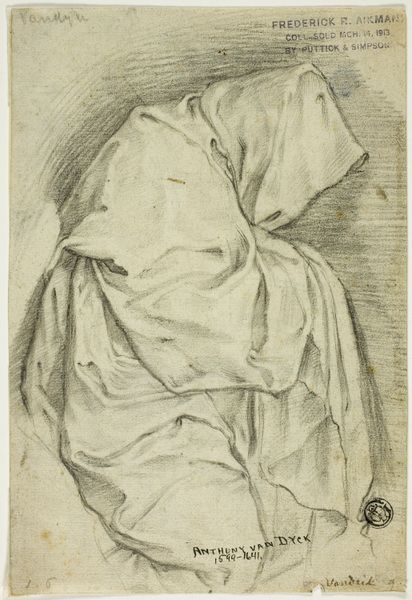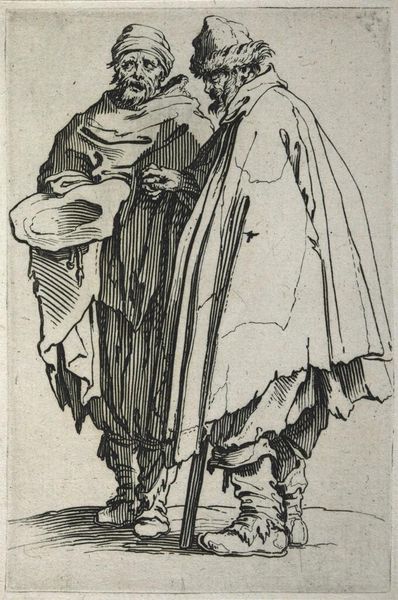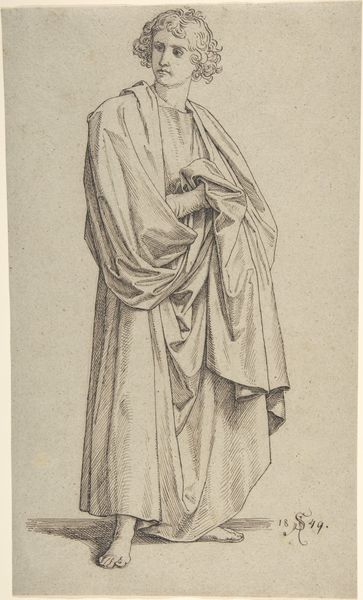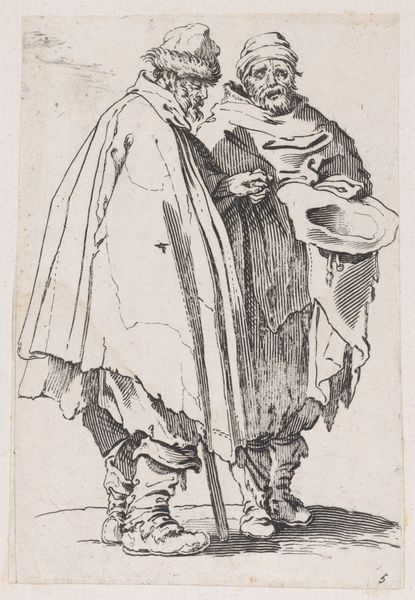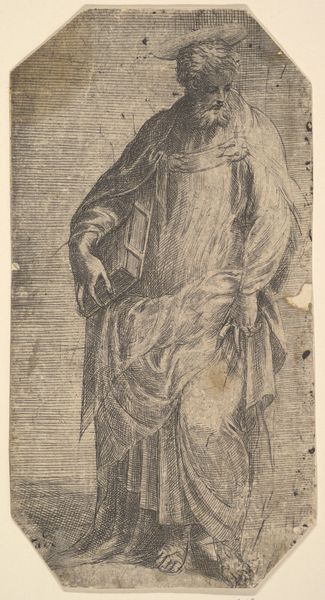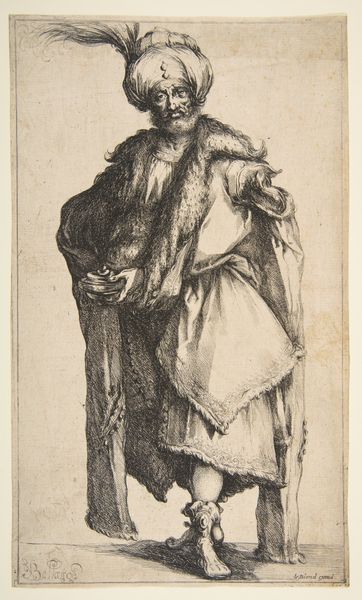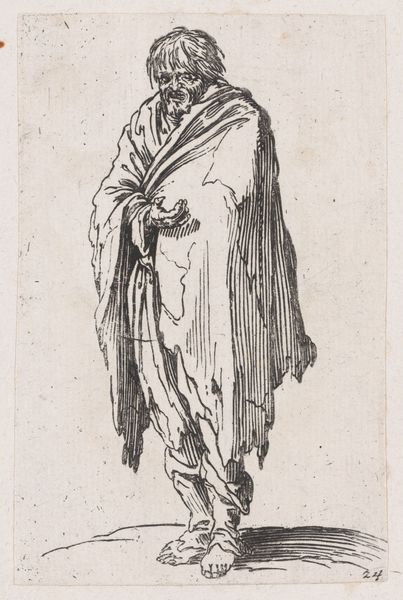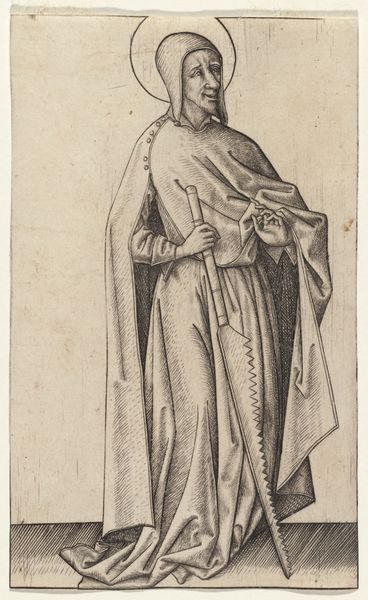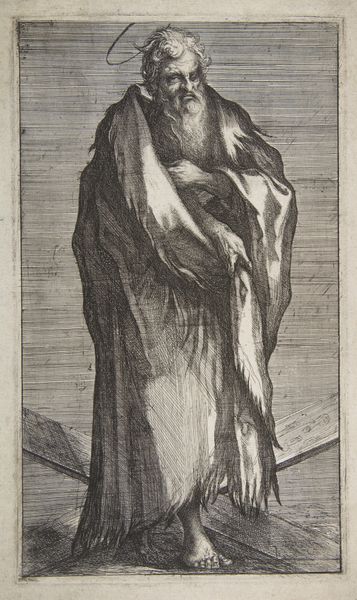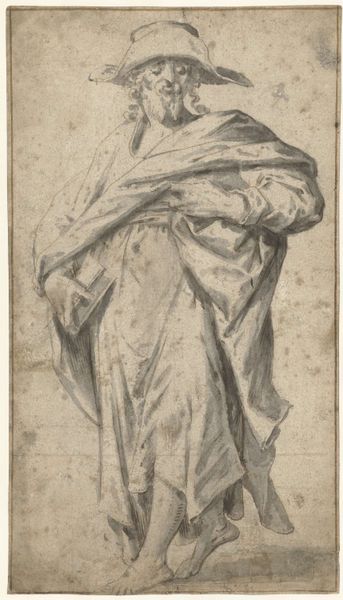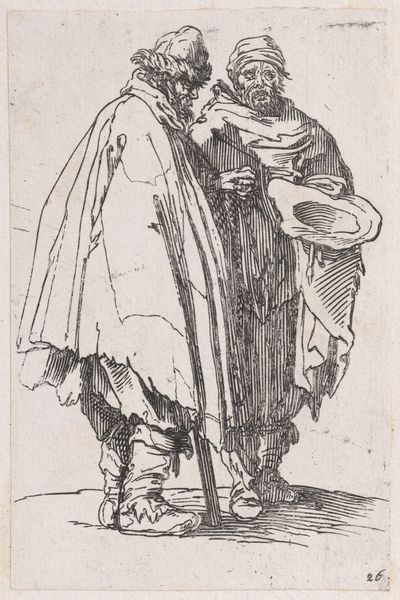
drawing, print
#
portrait
#
drawing
# print
#
mannerism
#
portrait drawing
Dimensions: Sheet (trimmed): 11 1/8 × 6 1/4 in. (28.2 × 15.8 cm)
Copyright: Public Domain
Editor: This is Jacques Bellange’s “Melchior, from Three Magi series,” made sometime between 1595 and 1616. It's a print, and the figure, seen from behind, has this extravagant costume…it’s so theatrical. What exactly am I looking at here? Curator: A performance of power, wouldn’t you say? Consider the context: Bellange worked for the court of Lorraine, a place steeped in spectacle. The image wasn’t just about religious narrative; it was a demonstration of wealth and taste, disseminated through prints. This “Melchior” becomes an emblem of aristocratic style. Editor: So it's not necessarily about sincere religious feeling? Curator: Perhaps. The Mannerist style—the elongated form, the ornate drapery—it all contributes to this sense of heightened artificiality. It is hard to see Melchior, and perhaps the very notion of religious piety itself, beyond the sheer display of visual artistry and the court's cultivated aesthetic. How would this image circulate? Who saw it? What did it signify for different viewers? Editor: So the print functions almost like a fashion plate of the time, circulating within a certain social sphere and dictating a kind of visual language. Curator: Exactly. It speaks to how art served to construct and reinforce social hierarchies. Think of the costume: not only a garment but an advertisement of privilege. These prints allowed nobles all across Europe to perform devotion in the most modern fashion. Editor: I guess I was focusing too much on the supposed religious meaning and missed the whole point about it being part of courtly culture! Thanks for untangling that. Curator: It’s a valuable lesson. Art, particularly in historical contexts, is so often about how imagery performs social work, beyond its apparent subject.
Comments
No comments
Be the first to comment and join the conversation on the ultimate creative platform.
